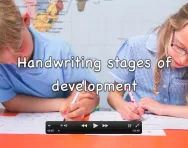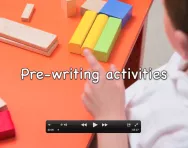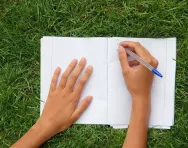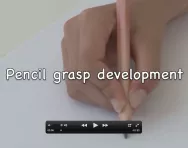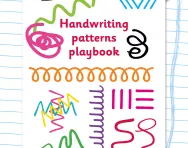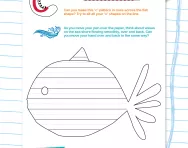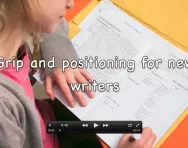Important update from TheSchoolRun
For the past 13 years, TheSchoolRun has been run by a small team of mums working from home, dedicated to providing quality educational resources to primary school parents. Unfortunately, rising supplier costs and falling revenue have made it impossible for us to continue operating, and we’ve had to make the difficult decision to close. The good news: We’ve arranged for another educational provider to take over many of our resources. These will be hosted on a new portal, where the content will be updated and expanded to support your child’s learning.
What this means for subscribers:
- Your subscription is still active, and for now, you can keep using the website as normal — just log in with your usual details to access all our articles and resources*.
- In a few months, all resources will move to the new portal. You’ll continue to have access there until your subscription ends. We’ll send you full details nearer the time.
- As a thank you for your support, we’ll also be sending you 16 primary school eBooks (worth £108.84) to download and keep.
A few changes to be aware of:
- The Learning Journey weekly email has ended, but your child’s plan will still be updated on your dashboard each Monday. Just log in to see the recommended worksheets.
- The 11+ weekly emails have now ended. We sent you all the remaining emails in the series at the end of March — please check your inbox (and spam folder) if you haven’t seen them. You can also follow the full programme here: 11+ Learning Journey.
If you have any questions, please contact us at [email protected]. Thank you for being part of our journey it’s been a privilege to support your family’s learning.
*If you need to reset your password, it will still work as usual. Please check your spam folder if the reset email doesn’t appear in your inbox.
Handwriting: how your child learns to write
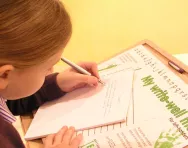
Educationalists generally agree that before a child is ready to hold a pencil and form letters correctly, they need to have developed fine motor skills and hand-eye coordination. This means that the brain has to become accustomed to working in conjunction with the muscles in the hand. Activities that encourage this include:
- Threading
- Picking up beads with tweezers
- Sticking
- Building with construction toys such as Duplo or wooden blocks
- Playing with playdough
- Using ‘easy to hold’ crayons and chalks
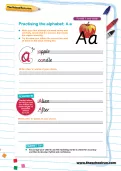
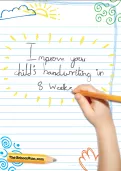
Improve handwriting in 10 minutes a day
- Step-by-step handwriting guide
- Over 200 worksheets
- From patterning to cursive
Angela Webb of the National Handwriting Association stresses the importance of fine motor experience at an early age. “Fine motor experience is essential as using a pincer grip between thumb and fore-finger is a pre-cursor for using the tripod grasp for holding a pencil later,” she says.
There is a concern that some fine motor tasks that were once an inherent part of day-to-day tasks for children, such as tying shoe laces, are now a thing of the past thanks to more contemporary trends to make life ‘easier’. But when should you begin teaching ‘correct’ pencil grip? “Children develop the ability to make and maintain the tripod pencil grasp between 3-6 years of age,” Angela advises. “Forcing them before that is counter-productive. Once they are ready, one way of making sure they use the correct fingers is to give them stubs of wax crayon or pencil for colouring and writing. This way, the full-finger grasp cannot be used.”
Handwriting opportunities: whenever, wherever
As your child enters school, and especially in the Foundation Stage or Year 1, their classroom environment should be designed so that writing can occur in any of the learning zones. This means writing materials may be supplied at the art table, near the numeracy area, in the home corner, etc., so that the activity can be child-initiated wherever and whenever deemed appropriate by them.
You can mirror this at home by providing fun paper and pencils, dotted around the house. Key to this approach, which promotes independence, is instilling in the children the confidence that they can write. They may not be able to spell words perfectly – it may be that they can perhaps write the first sound of each word, or just all the sounds they can hear. Perhaps they just use pictures and some lines. All of this is still writing. If they can read back what they have written, and if it serves their purpose, this is writing; positive praise and confidence-boosting encouragement should be offered in return.
Resources to inspire handwriting
If an HB pencil and a plain notebook are failing to do the trick, then it’s time to go shopping. Indulge them and follow their interests. It may be that where a plain pad never got opened, one with a favourite story or TV character on it is the bee’s knees. Go wild with sparkly pencils and pens, rubbers, pencil sharpeners, pencil cases, coloured papers – the works!
Your children also may like stuff that looks grown-up and ‘proper’. Using ring files, diaries and standard pens can make little ones feel super-smart, and can all be found at fairly low prices.
Handwriting practice sheets are a great tool to help your child form letters correctly by following guideline fonts. There are lots of printable handwriting practice sheets on TheSchoolRun, or you can invest in personalised, wipe-clean handwriting practice mats from My Little Learner.
Handwriting help for parents
For more help with handwriting, check out our subscriber learning pack, Improve your child's handwriting in 8 weeks.
Browse through our handwriting worksheets for practical activities, including patterning exercises to help establish good handwriting habits.



